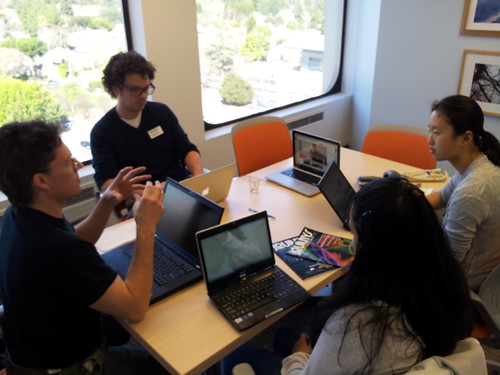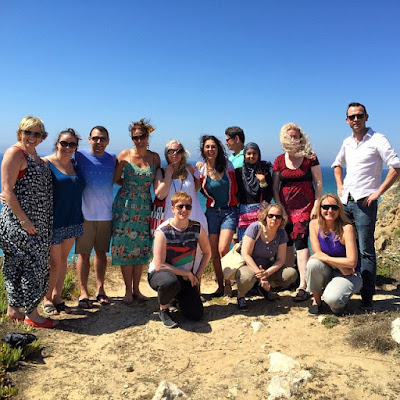James Allen wrote this about thought: “Man is made and unmade by himself. In the armory of thought he forges the weapons by which he destroys himself. He also creates the tools with which he builds for himself heavenly mansions of joy and strength and peace. Between these two extremes are all the many grades of character, and man is their maker and their master. ”
So if man is the maker and master of thought, how do you go about learning to harness your own thoughts to create a better reality and become a more efficient, more productive, and more successful human being?
Well, obviously there are plenty of ways to go about such an endeavor, but today I want to talk about one of them. Brainstorming.


Because in order for us to get better at thinking, we first need to learn how to produce more thoughts. The more thoughts we have, the more chances we have to bring something more exciting into this world, and the more we generate new thoughts, or brainstorm, the better our mind gets at creating these new ideas.
The Key to Brainstorming
The key thing to realize about brainstorming is that it’s solely about creation. It’s not about judging the ideas that arise or forcing yourself to think a certain way. What it really is, when it comes down to it, is “forceful creation.” To put it another way, you are willfully forcing your brain to be creative.
And since creativity is something that should be allowed to run its own course rather than be intellecualized, the entire process is a bit of a contradiction.
For this reason, it is a process rife with confusion and hesitance. So today I want to go over some different brainstorming techniques you can use. And you can use these to attack any problem in your life – from coming up with a new marketing strategy for your business to writing a new book to launching a new website to designing a new life for yourself.
Let’s have a look.
1. Mindmapping Software

The first tool I want to introduce is actually software, and I realize this might sound extremely counter-intuitive and possibly counterproductive. After all, how in the world can you tap into your mind’s innate creativity with an electronic-based program?
But I stand by my assertion that mindmapping software really is priceless when it comes to this type of thinking, and it’s very hard to describe until you just dig in and give it a try.
The type of software I’m talking about specifically is the kind used by MindJet MindManager and Freemind.org, the latter of which, as the name applies, is downloadable for free.
The way these program works is you have an empty page with theoretically as much room as you could ever need. You click on the blank slate and create a bubble or box, depending on which program you’re using. You then write in the box the main idea you’re working from.
Let’s say, for instance, that you’re planning out a new website. You might write the name of the website here. If you click on another place on the page, it creates new nodes that comes out from that. You might lable one “Marketing,” one “Products,” and one “Audience,” for example.
Then from each of these nodes, you can create other smaller nodes. From “Marketing,” you might branch out to “Follow-up Marketing,” “Social Marketing,” “Branding,” and so on.
And you keep branching out and getting more and more specific until you’re just hammering out specific ideas for each segment of the web you’re creating.
This is just one way to use it – your mindweb or mindmap can be ogranized however you see fit.
And of course you can also do this type of mind-mapping technique on paper. But I find it way more productive to do it with software. It’s like a whole new world of creativity opens up to me when I match the speed of my mind and the speed of a computer with this old technique.
2. Become a List Whiz

A great way to train yourself to be more creative is to get in the habit of writing lists. Set time aside everyday to write lists about random things, or pressing problems when needed. Feel free to write about zany, irrelevant lists if you can’t think of anything better; it’s really just about strengthening your idea-generating muscles.
Lists I often write include stuff like, “10 Novels I Would Like to Write,” “20 Businesses I Could Start Tomorrow,” “10 Blog Articles for My Site,” or chapter lists for books I want to write someday.
Do this each and everyday and watch your creative muscles grow.
3. Mastermind Groups

Mastermind groups are a fantastic way to leverage the thoughts, knowledge, and inspiration of others in your path to success and happiness. Masterminding is nothing more than surrounding yourself with like-minded people who have similar goals.
You can create a formal group that sits down and actually involves in group discussions or brainstorming exercises if you like. It’s a platform where you can bounce ideas off of each other and take turns commenting on them.
You can also create something more semi-formal, where you meet every once in a while and sit down to discuss issues affecting your central industry or interest and then fill each other in on your individual challenges and invite ideas.
Or it can be completely informal. Just go out of your way to work out and socialize, etc, with people on the same path as you – mastermind ideas and inspiration will usually evolve naturally through your social interaction.
Online forums are also a good resource for masterminding and you don’t even have to ask people to specifically brainstorm. Just make a thread about the issue or situation and people will chip in with their different experiences and opinions.
4. Meditate Before You Brainstorm

One of the best ways to make yourself more emotionally healthy and tap into your creative juices is to develop the habit of meditation. After all, it’s hard to break into your intuitive side if your mind is filled with the clutter and stress of everyday life.
Meditation doesn’t have to be far-out or religious either. Just think of it as learning to calm and focus your mind. To mentally recharge. I make it a habit to meditate everyday as a part of a morning ritual I perform upon waking every morning – after working out and cleaning around the house. Just a quiet ten to twenty minute meditation.
Directly after this meditation is a great time to do a brainstorming session. In fact, you can make it a habit to brainstorm every morning after your meditation on whatever is currently your biggest goal, idea, or challenge.
5. Brainstorm in Your Sleep
Feeding yourself issues to handle while you sleep can often yield incredible results. Sometimes an issue is more appropriate for your subconscious than your conscious mind, and in cases like this, active brainstorming is nothing more than walking in circles. When you get in bed, meditate on the problem or idea for a minute, asking your subconscious to give you a solution by morning.
It can feel like magic at times.
6. Group Passing
While I do recommend masterminding, I’m actually not a big proponent of brainstorming in groups. Not that I don’t know they have enormous potential, but I’m just more of a solo-thinker myself and I find I don’t get as much out of them as most people do.
But if there’s one group-brainstorming exercise that really works well, it’s the concept of group passing.
Basically, you start with the central idea, or the foundation of what is to be brainstormed, and the first person in the group expands on that idea, without any input from the group. This person can even be tasked with coming up with the idea to be brainstormed.
Then they pass the paper to the next person and that person expands on it as they see fit. The idea is passed then to the next person and it evolves even further. The paper goes around the entire group and then the final result is shared with everyone.
Another thing I like about this tactic is that it can be done without physically getting together – over the Internet. Google Docs is a great way to do it; the online documents are easily shared and editable among the group.
7. Write It Out

Using a good old pen and paper will never lose its effectiveness when it comes to letting your thoughts run free. In fact, some people prefer this as your mind works faster than you write, so by the time you finish writing down a thought, you’ve already got another in mind. In contrast, when many people type, they find themselves starting and stopping a lot, resulting in a much choppier process.
Do this any way you like. Free-writing is particularly effective for letting your mind run free. Write lists – this is a common brainstorming method for people who don’t even know what the word means, so it seems our minds intuitively work that way. And of course, you can create mindmaps.
One of the best things about writing is you can take this technology with you anywhere. Get a small notepad and keep it at all times, pulling it out when new thoughts cross your mind. I find this puts me in a constant brainstorming state, and I walk around creating throughout every minute of my day.
This type of constant approach allows you to catch yourself at your most creative. When intuition strikes, you can just sit down and get to spontaneous writing.
Whiteboards are also very effective. Hang one in your house with your major projects or developing ideas on them and it makes it official. You look at it and you get inspired. You have an idea and you add to it. It evolves as time goes on and sits further into your mind.
8. Give Yourself Omnipotence
I like the way Tim Ferris does this in his dream-lining technique. When he goes to goal-set, he asks himself what he would accomplish in three months time if he was the richest and smartest man in the world, and then starts from that foundation.
This essentially gives you liberty by removing all limitations. You don’t stop yourself from brainstorming down a certain path because “Oh, I’d need a couple hundred thousand dollars to do that” and then move on to another idea. Instead, you arrive at an idea that doesn’t recognize any boundaries and figure out a way to make it possible.
9. Brainstorm the Outlandish
Take the previous technique a step further by imagining nothing as impossible. Some of mankind’s greatest feats were accomplished when people decided to figure out a way to do something no one believed could be done.
How can we hurl a huge chunk of metal through the air so fast that it stays aloft and use it to carry people around the world? How can I create a light that never goes out so we don’t need fire to do the things we can usually only do in the day-time? How can I manufacture a device that allows me to talk with someone on the other side of the world as if we were speaking face-to-face?
The only way to produce impossible results is giving yourself impossible challenges and attacking them with your mind.
10. Walk Away From Thinking

Sometimes you get too wrapped up in a problem and can’t extract yourself from it, so somewhere along the line in your brainstorming you may run into a dead-end or keep going in circles. What’s happening here is you’re trying to think yourself through it rather than tapping into your creative side.
Often, it’s best to get out from behind the computer or desk and go for a walk or do something that completely removes you from the situation. Your brain may just need downtime to sort things out, and you’ll often find that minutes after it’s out of mind an epiphany strikes.
The Power of Thoughts
Thoughts may be the most powerful force on Earth.
In fact, they are so powerful that the existence of life on Earth is at risk due to things our thoughts have created – a worrying problem, no doubt, but a wild reality to contemplate.
Look around you. The computer mouse in your hand. Your laptop itself. The software that powers it. The table it sits on. Look up at the ceiling – the walls surrounding you and the building containing the room. The streets outside and the entire city laid out around you.
Everything you see and touch that is made by man was created first in the mind of a person and went through a process to be turned into a reality. In fact, some philosophers, and perhaps even some scientists, would go as far as to say that your entire reality is but a thought, and that your own thoughts can be used to direct and create the world around you.
I don’t want to get too esoteric on you today, but it’s clear that thoughts are an extremely valuable resource that has been recognized and even held in awe by wise-men throughout the centuries.
Will you be wise enough to see their value? Pick one of these brainstorming exercises and use it to start mastering your thought-creating capabilities. Tackle one of your greatest challenges today. And make doing so a habit.

No comments:
Post a Comment